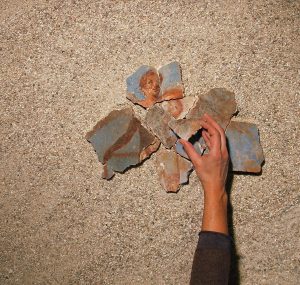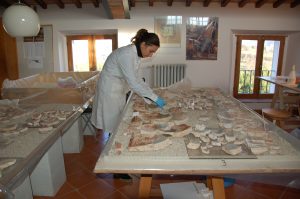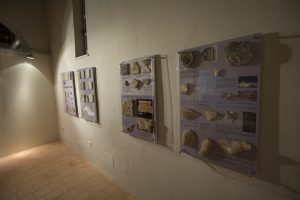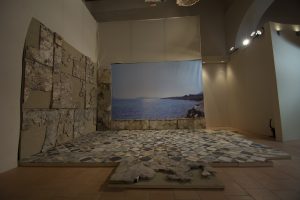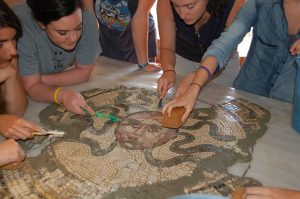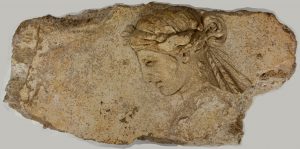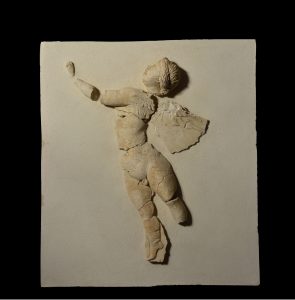The Medusa Mosaic
The 2005 excavation campaign led to the discovery of the remains of a room, containing the remains of the collapsed first story flooring, originally decorated with a mosaic showing peltae decoration, with a central roundel depicting a Medusa.
The gorgon Medusa’s head is depicted within a shield of peltae arranged in concentric circles. The black and white peltae are alternated to create the illusion of continuous movement.
When first excavated in 2005, due to unfavorable preservation conditions on the excavation and the lack of sufficient time to ensure adequate recovery of the artifact, the Soprintendenza per i Beni Archeologici per le province di Sassari e Nuoro chose to carry out documentation, preconsolidation, protection in situ and reburial. Almost ten years later, thanks to the opportunity offered by two professional training courses, carried out by CCA for the Syrian Directorate General for Antiquities and Museums, DGAM, and for the University of Delaware, United States, recovery operations were carried out at no cost for the administration.
In the following two years, the mosaic fragments were treated in the laboratory. Original mortar preparation layers were removed, thus cleaning the rear side of the tesserae.
Fragment after fragment, tessera after tessera, the central roundel Medusa and part of the peripheral decoration slowly takes shape, and is ready to be applied on a new base, formed by lime-based mortar mixed with aggregates applied on an aerolam aluminium honeycomb panel.
The Medusa mosaic currently enriches the Museo della Città of Alghero, observing the visitor with its magnetic gaze. It invites the viewer to imagine the splendor of the villa, the sun and sea breeze that caressed it through the window of the first floor room, the servants and masters that tread on its surface for years.













